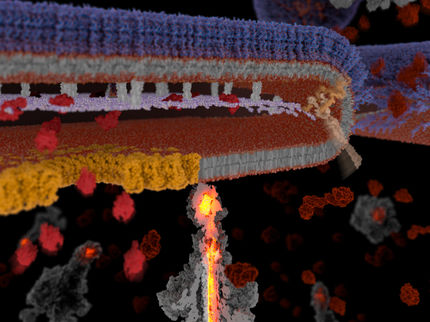Molecular Zippers Hold Golgi Membranes Together
Advertisement
After being produced at the endoplasmic reticulum, proteins enter the Golgi apparatus and travel through its stacks of cisterna membranes. As the proteins move through the cisternae, they receive a variety of modifications and are finally sorted into vesicles for delivery to different locations inside and outside the cell.
The elaborate membrane architecture of the Golgi is crucial for regulating the modification and sorting of cargo proteins, as different Golgi enzymes are localized to specific cisterna stacks. However, many questions remain about how the Golgi architecture is established. Researchers at the MPI of Biochemistry helped answer these questions by using in situ cryo-electron tomography to identify new molecular structures inside the Golgi of the alga Chlamydomonas.
Until recently, researchers could only use traditional electron microscopy to look closely at cellular structures. However, the sample preparation steps required for this technique can damage the specimen and thus prevent the observation of fine molecular details. Scientists in the “Molecular Structural Biology“ Department, led by Prof. Wolfgang Baumeister, have engineered a method called in situ cryo-electron tomography. The cell is rapidly frozen to preserve its delicate structure and then thinned with a focused ion beam, revealing the cellular interior. Next, an electron microscope is used to acquire a three-dimensional view of the unperturbed molecular environment inside the cell.
Experts in the Golgi field assumed for a long time that the cisterna stacks were not held together by linker proteins. By using cryo-electron tomography to look at the Golgi apparatus, Benjamin Engel and his colleagues discovered arrays of proteins between the cisterna membranes (see figure), which had gone unseen using other techniques.
The researchers believe that the protein arrays may have several functions to help the Golgi carry out its role as the cell’s post office. Do these structures define a sub-compartment of the Golgi that accelerates the enzyme reactions used to modify cargo proteins? Do the protein arrays physically force larger cargo proteins to the periphery of the Golgi, where they are sorted into vesicles for delivery? These are questions that Benjamin Engel and his colleagues want to solve in the future.


















































